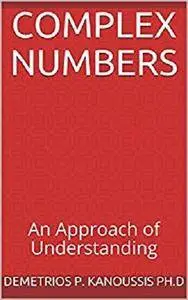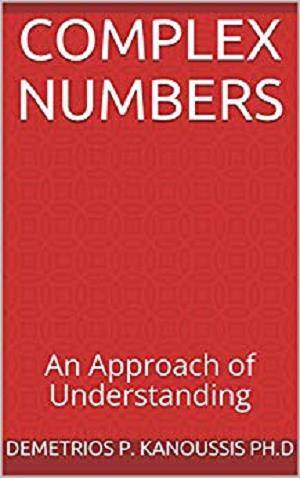Complex Numbers: An Approach of Understanding (The Mathematics Series) by Demetrios P. Kanoussis Ph.D
English | June 20, 2017 | ISBN: N/A | ASIN: B0731G7KDL | 91 pages | PDF | 1.39 MB
English | June 20, 2017 | ISBN: N/A | ASIN: B0731G7KDL | 91 pages | PDF | 1.39 MB
Complex numbers have amazing applications, not only in Mathematics but in many areas of Physics and Engineering as well. In Mathematics complex numbers are used to evaluate certain types of infinite series and real valued improper integrals, while in Physics and Engineering in general, complex numbers help to study the flow of fluids around objects, to analyze Alternating Current Circuits, (a problem of great practical importance), to investigate the propagation of radio waves through various media, etc.
Also several features of complex numbers make them extremely useful in proving various geometrical propositions, in simple and elegant ways. As a striking example, we quote the Cote’s Theorem, (proved in Example 14-8), the proof of which without complex numbers would be extremely difficult if not impossible.
The current text is a complete and self contained presentation of fundamental concepts, definitions, theorems and techniques on complex numbers and has been designed to be an excellent supplementary textbook for all Mathematics, Physics and Engineering students.
In Chapter 1 the complex numbers are introduced as ordered pairs of real numbers and the elementary operations with them (equality, addition, subtraction, multiplication and division) are defined.
In Chapter 2 we define the fundamental laws in the Algebra of complex numbers, treated as ordered pairs.
In Chapter 3 we introduce the imaginary unit i and show the fundamental property, that every complex number z=(x,y) can be expressed in the equivalent form z=x+iy, where x and y are real numbers.
In Chapter 4 the concept of the conjugate complex number z ̅ of z is introduced and various identities involving complex conjugate numbers are proved. Two important Theorems concerning the roots of polynomial equations with real coefficients are also presented and proved, with the aid of the properties of complex conjugate numbers.
In Chapter 5 we define the absolute value or the modulus |z| of a complex number z, and derive a number of important properties related to |z|.
In Chapter 6 we derive the so called Trigonometric or Polar form of a complex number, and prove two important Theorems about the product and the division of two complex numbers expressed in Trigonometric form.
In Chapter 7 we state and prove the De Moivre’s Theorem and show how this Theorem is applied in order to express cos(nϕ) and sin(nϕ) in terms of cosϕ and sinϕ, n=1,2,3,⋯.
In Chapter 8 we show that every complex number has exactly n distinct n-th roots.
In Chapter 9 we derive the n-th roots of unity and discuss some fundamental properties of the cyclotomic equation.
In Chapter 10 we introduce the famous Euler’s formulas and by means of these formulas we extent the trigonometric functions from real values of the argument to complex values of the argument.
In Chapter 11 we introduce the hyperbolic functions of real and complex arguments and derive the relationship between trigonometric and hyperbolic functions.
In Chapter 12 the exponential form of a complex number is derived, by means of Euler’s formulas.
In Chapter 13 we define the logarithm of complex numbers, and as a consequence the logarithm of negative numbers are obtained, (note that within the set of real numbers the logarithm of a negative number simply does not exist)
In Chapter 14 we discuss the geometrical representation of complex numbers on the complex plane (Argand’s diagram), and show that geometrically a complex number can be equivalently represented by a vector, and therefore various properties of complex numbers can be proved geometrically, and conversely, geometrical propositions can be proved with the aid of complex numbers.
The 90 illustrative solved Examples and the 180 characteristic Problems to be solved have been chosen to help students develop a solid theoretical background, broaden their knowledge and sharpen their analytical skills on the subject.



